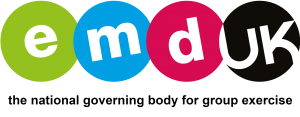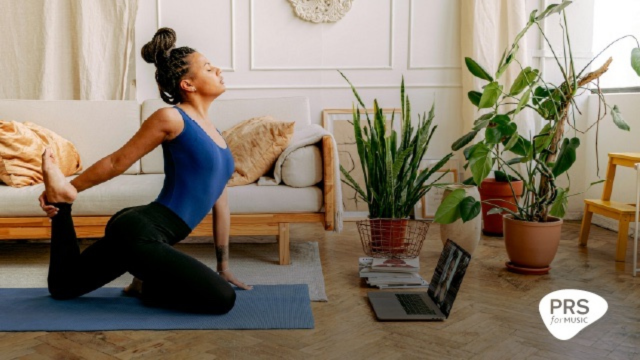Last Updated on September 5, 2025 by Laura Jensen
15th July 2025, London, England – A new licence, tailored for the fitness and dance market, has been launched by PRS for Music to simplify the process of using music in both on-demand fitness content and live-streams. Designed with instructors, fitness platforms and studios in mind, the Digital Music Licence for Fitness and Dance provides customers with access to more than 45 million songs from around the globe.
A recent study found that choosing tracks with the right beats per minute (BPM) to match the intensity of the workout is essential to increasing workout class participation [1].
An expansive catalogue of works encourages fitness instructors, personal trainers, dance teachers and to explore their creative side, using music to weave together tempo and rhythm to fire up motivation during online classes, while royalties generated from sales of the licence ensure songwriters, composers, and music publishers are fairly rewarded for the use of their songs.
In developing the new terms of the licence, PRS for Music sought feedback from stakeholders across the health, fitness and wellbeing sector including EMD UK, the national governing body of group exercise who is committed to driving positive change within the industry. The licence is available to purchase from https://www.prsformusic.com/danceandfitness
Gavin Larkins, Director of Commercial Development, PRS for Music, said: “Music is a performance partner that transforms and energises a fitness or dance class. Behind every playlist is a songwriter whose creativity fuels those moments. That’s why we created a licence which works for our customers but also ensures music creators receive fair compensation for use of their works.”
Sue Wilkie, Head of Workforce, Governance & Partnerships, EMDUK, said: “We’re delighted to have supported Gavin and the team at PRS for Music during the consultation and development of this new licence. We all benefit from the songs that fuel group exercise, and by tailoring the options available to the health and wellbeing sector we also ensure the songwriters who are behind every beat can keep producing the hits we need for our classes.”
Find out more about the PPL licence changes on our resource platform here.
FAQs
What are synchronisation rights?
Synchronisation (or “sync”) rights are the permissions needed when music is permanently combined with moving images. For example, if you record a class and edit music into the video.
Does this licence include synchronisation (sync) rights?
No. This licence covers two other important rights you need to run your classes online:
Performance rights (PRS): This is the right to play music in public. In this case, streaming or broadcasting music as part of your online fitness or dance classes.
Mechanical rights (MCPS): This is the right to copy or reproduce music. For example, when you record a class that includes music and make it available on-demand.
Together, these two rights mean you’re legally covered to use music during your online classes and to stream them to your audience.
Synchronisation rights are separate. They cover the initial pairing of music with video.
Why aren’t sync rights included in this licence?
Sync rights are licensed separately because they are owned directly by the rightsholders (typically music publishers and record labels)
So what does this licence give me?
It ensures you are legally covered to stream or make available, on-demand fitness and dance classes using PRS and MCPS repertoire. Sync is an additional right that sits outside of this scheme.
If I get sync rights, do I still need this PRS licence?
Yes. Sync rights only cover the pairing of music with visuals. Once that content is streamed or made available online, you also need a PRS licence to cover the public communication of the music. In other words:
Sync = embedding the track in the video
PRS/MCPS licence = legally streaming or sharing it with your audience
They work together to keep you fully covered.
How can I get sync rights if I need them?
Commercial Music – direct clearance: If you need specific commercial tracks, sync rights can be obtained directly from the rightsholder (typically publisher or record label) that owns the song or via our website if we are mandated to do so. Please see our website for more details and support: https://www.prsformusic.com/licences/releasing-music-products/commercial-music-sync-licensing
NB – Where the tracks are controlled directly by the publisher or record label, we are not involved in this process and will not be able to check if this has been obtained.
Production music: PRS/MCPS represent a wide range of production music libraries. These are often pre-cleared for sync and provide an easy, cost-effective option. More information can be found here https://mcpsproductionmusic.co.uk/
How is the cost of this licence worked out?
The fee is based on the actual amount of music you use. We look at:
- The number of tracks played in each class/lesson
- The number of streams or on-demand views your classes receive
- Whether the class is live-streamed or on-demand
You can fill in PRS’s online form to help you to calculate exactly what your costs would be. This can be found here.
Why does the price sometimes seem higher than expected?
Because this licence is designed to scale fairly with your usage:
Smaller operators who don’t use much music or have limited views will only pay the minimum fee (£193 per usage type).
Larger operators who deliver a lot of classes and streams pay more, because they are using music more extensively.
This way, everyone contributes in proportion to the value they get from using music.
What if I only run a small number of classes?
If your total usage falls below the threshold, you’ll simply pay the minimum fee of £193. Many smaller services pay just this amount, you won’t be charged more than necessary.
Do I need to report my music usage?
Customers who pay only the minimum fee do not need to provide any music reporting.
If a customer’s usage is above the minimum fee, they must provide music reporting quarterly.
Notes:
About PRS for Music
Here for music since 1914, PRS for Music is a world-leading music collective management organisation representing the rights of more than 180,000 talented songwriters, composers and music publishers. Redefining the global standard for music royalties, PRS for Music ensures songwriters and composers are paid whenever their musical compositions and songs are streamed, downloaded, broadcast, performed and played in public.
For more than 110 years it has grown and protected the rights of the music creator community, paying out royalties with more accuracy, transparency and speed. In 2024, PRS for Music paid out £1.02 billion in royalties and collected a record £1.15 billion in revenues.
EMD UK is the only governing body dedicated solely to the group exercise community. Our members benefit from our guidance, CPD-accredited courses and over 250 resources. Pro membership with insurance starts from just £51 annually.



